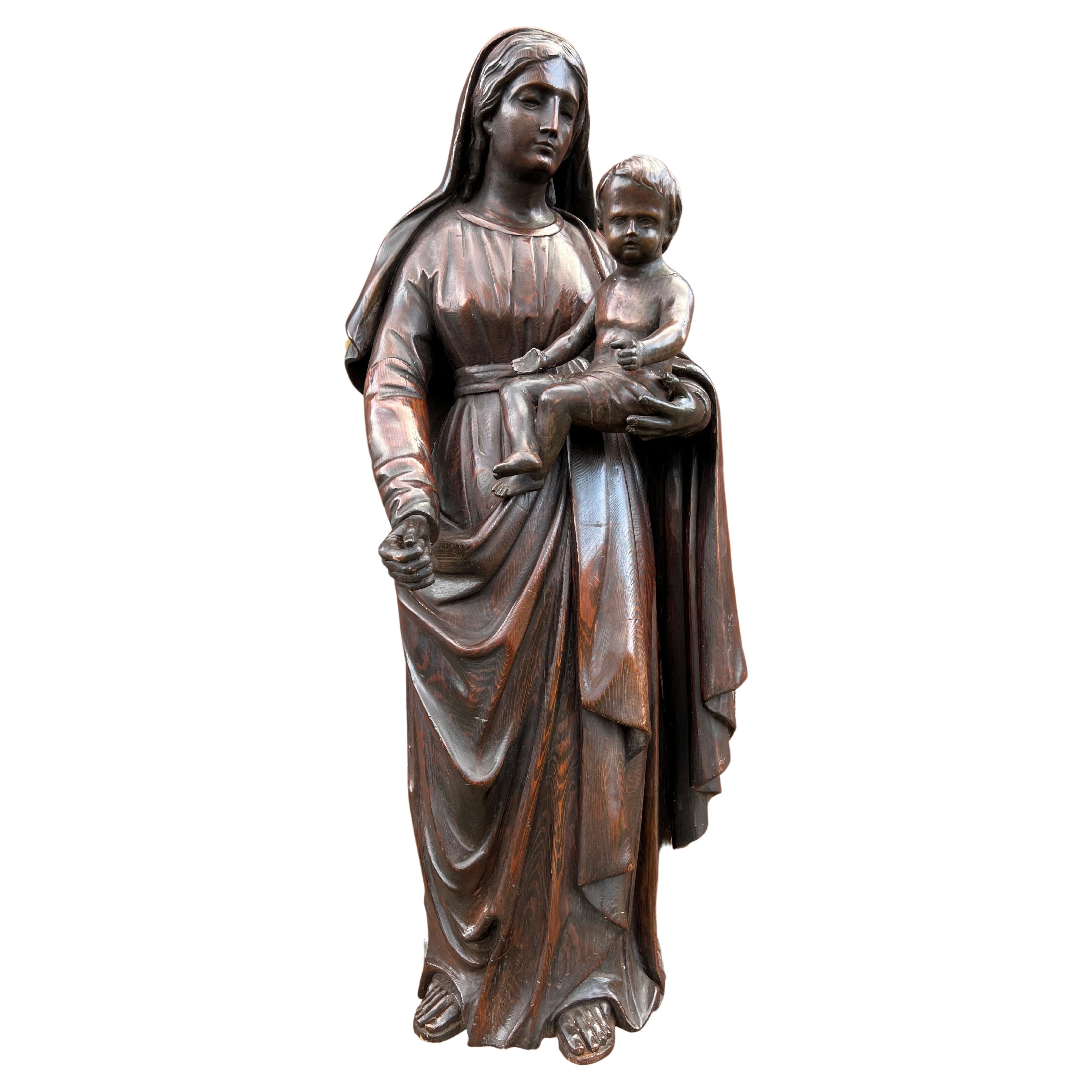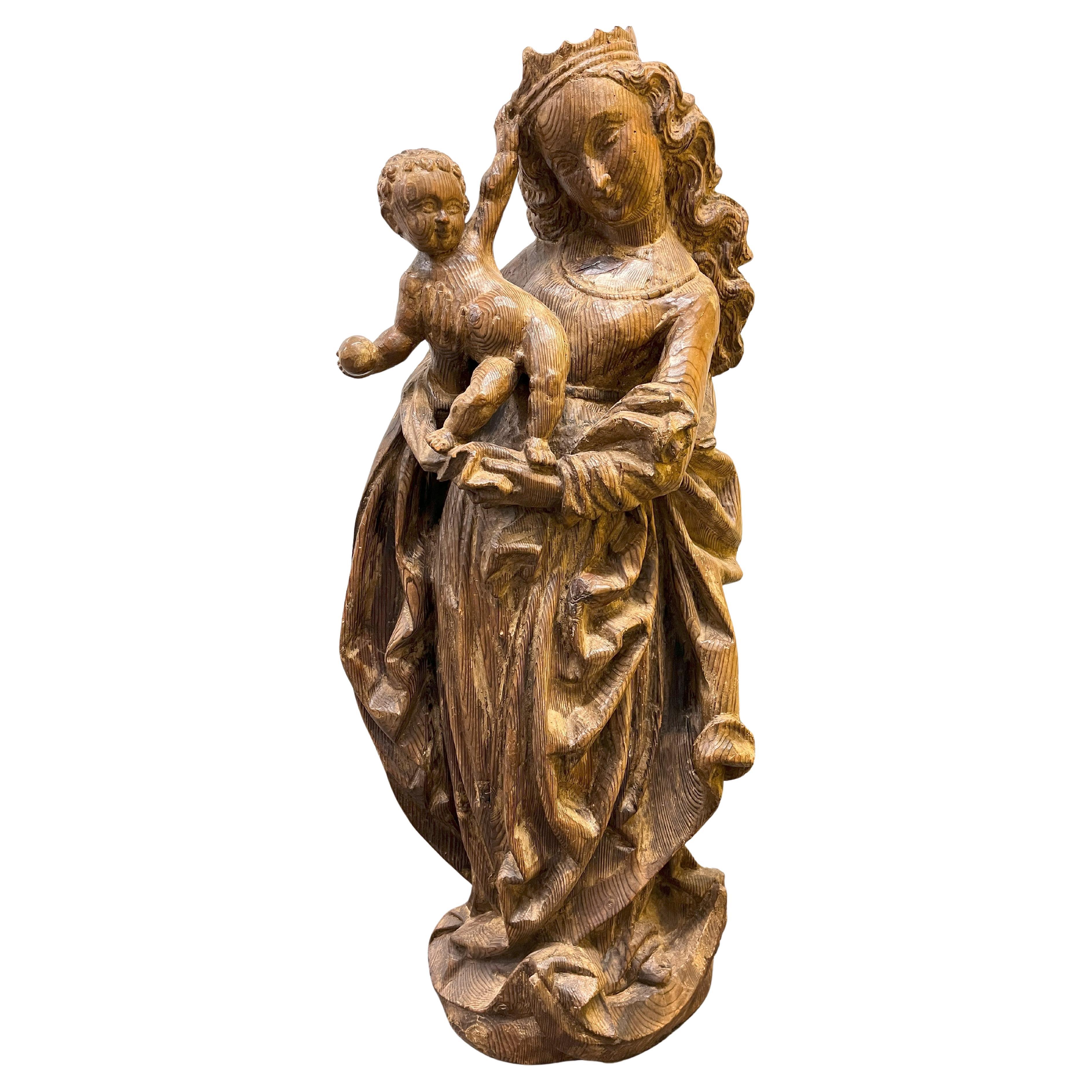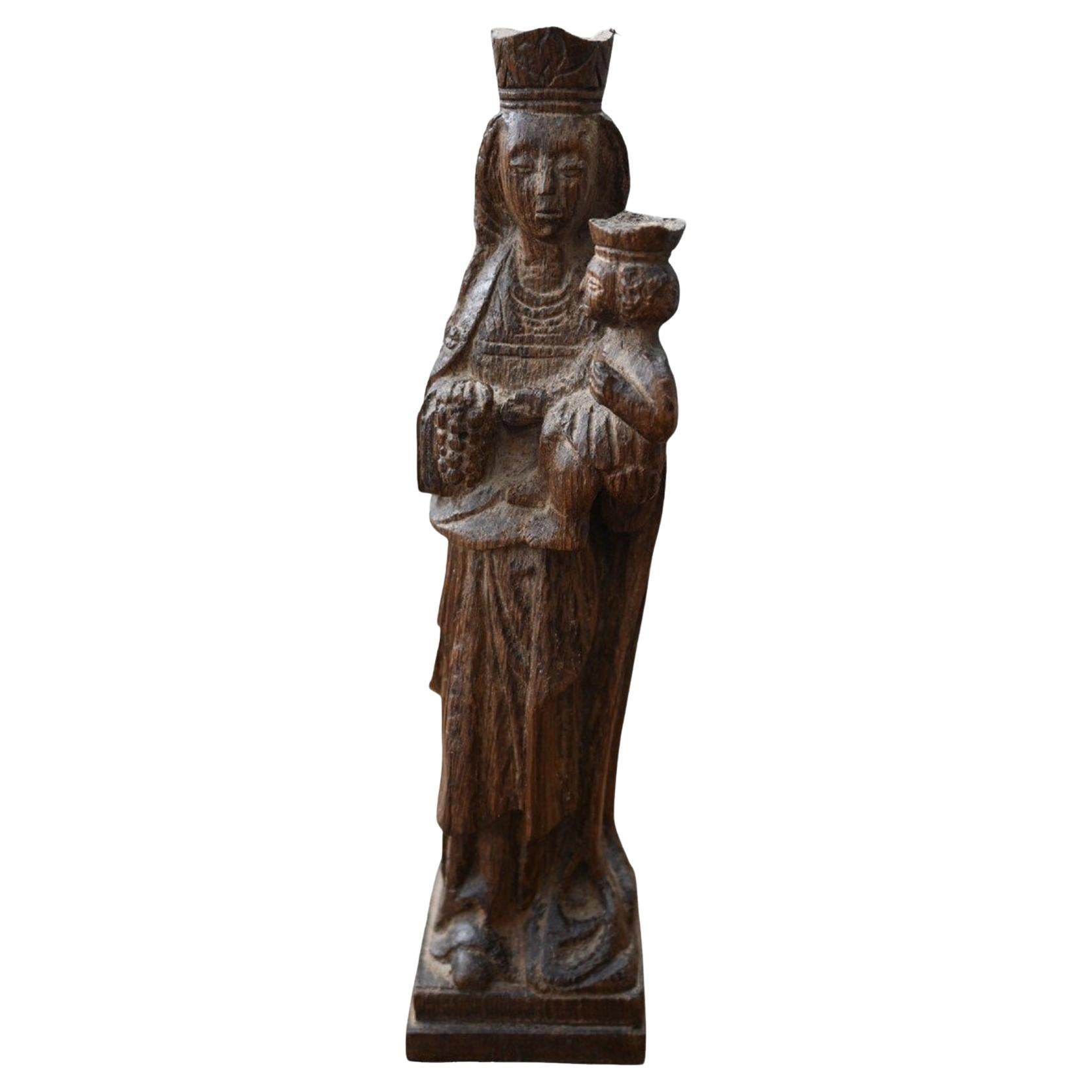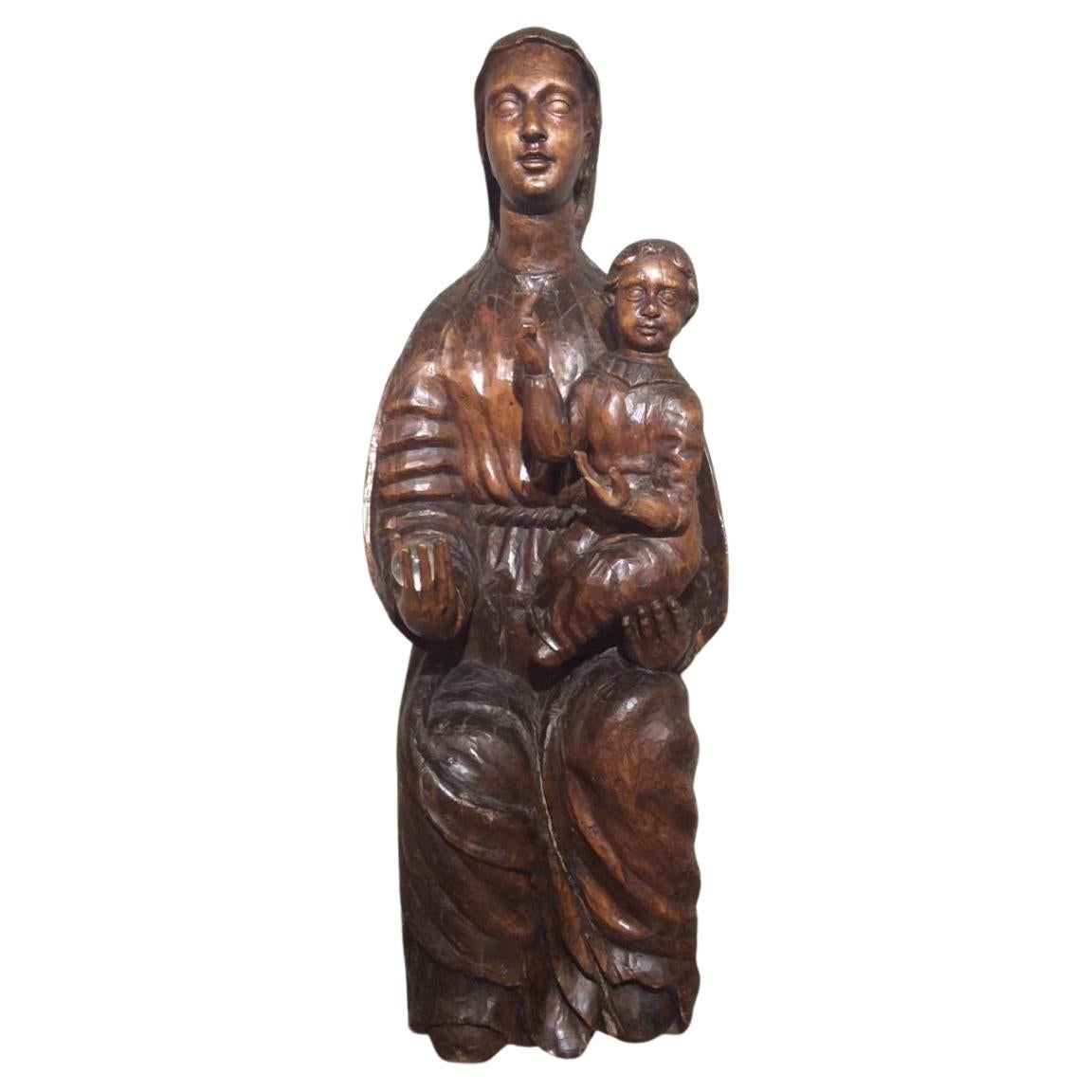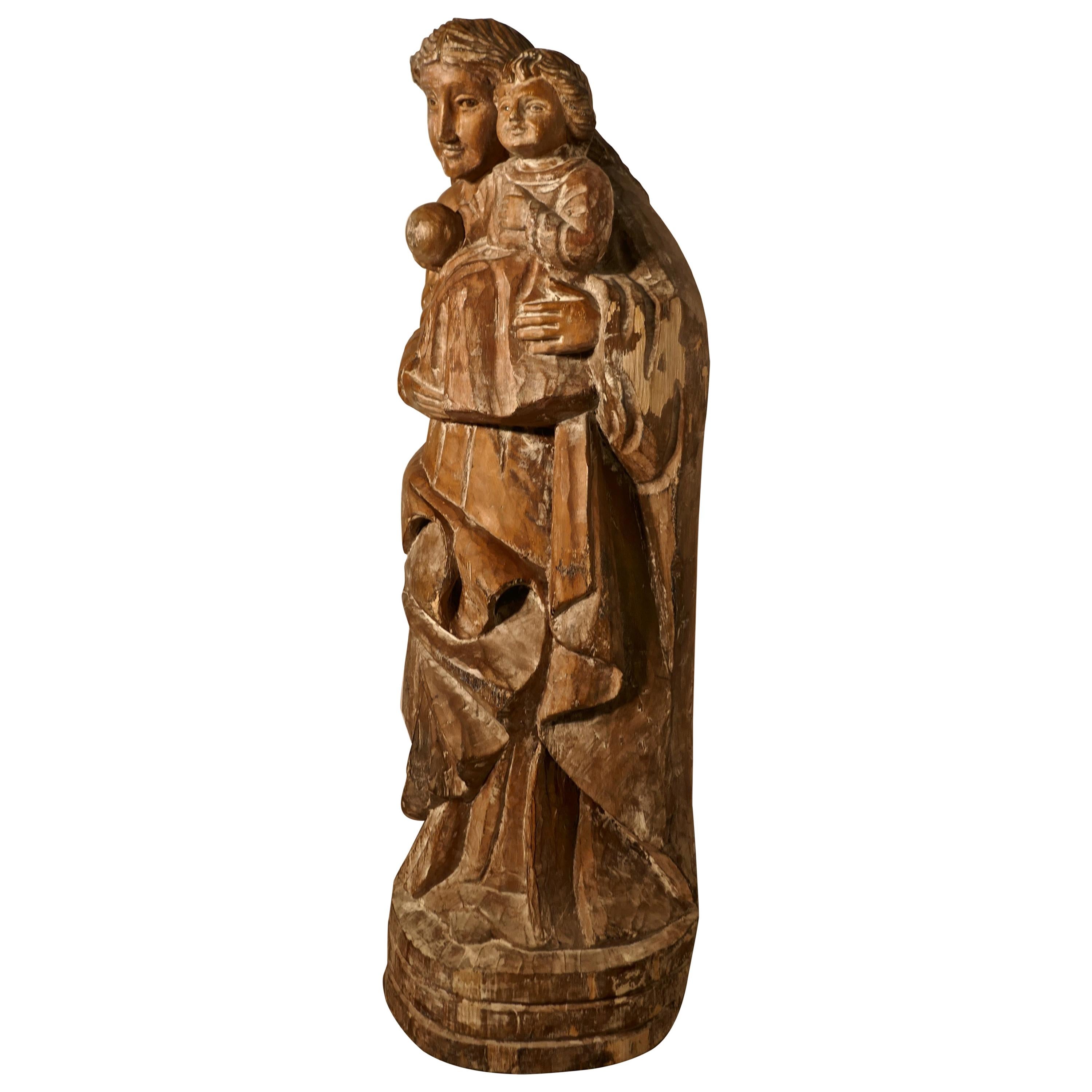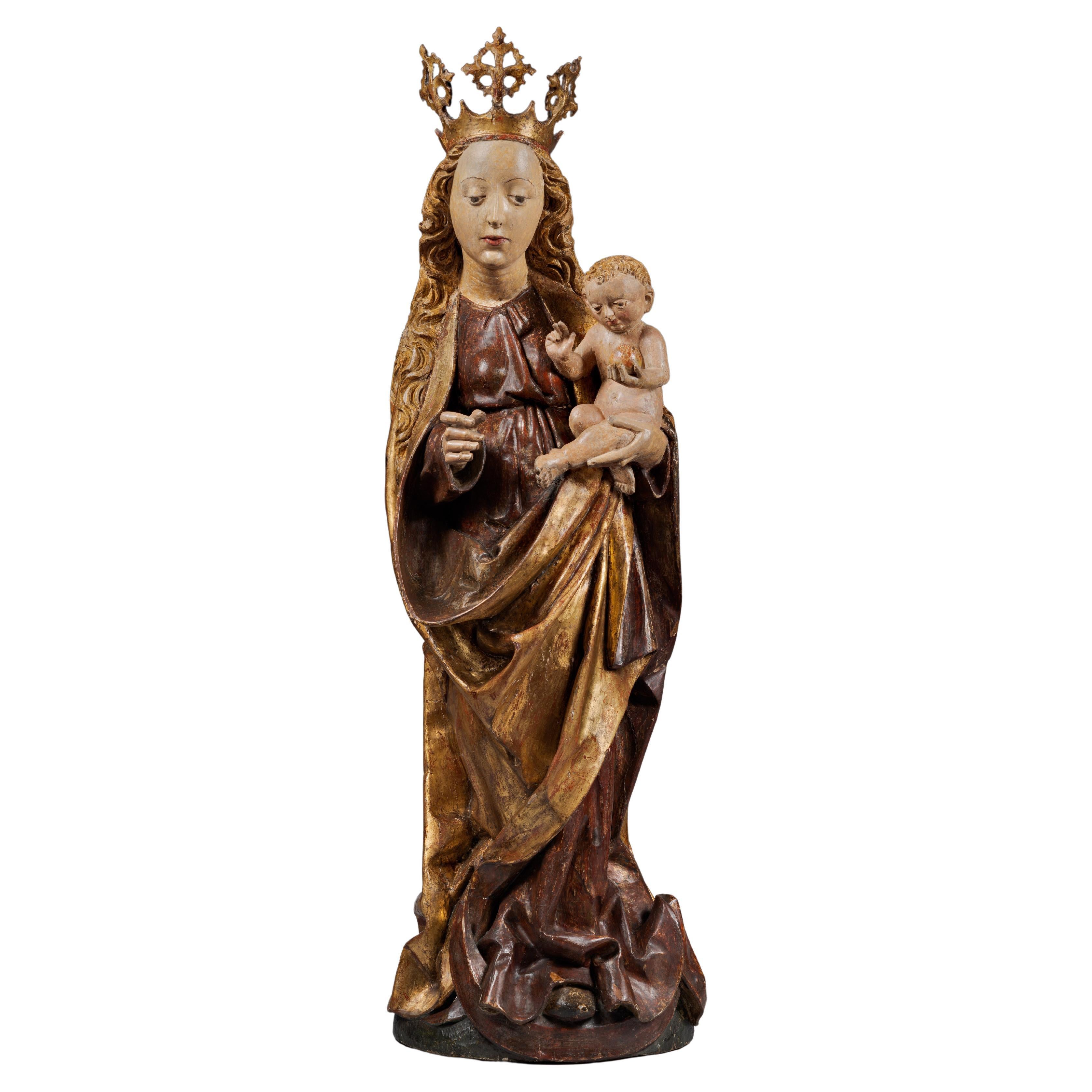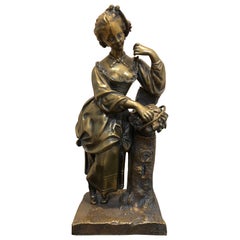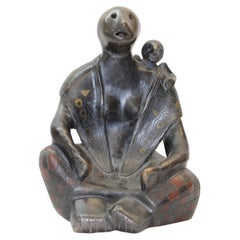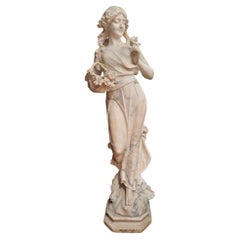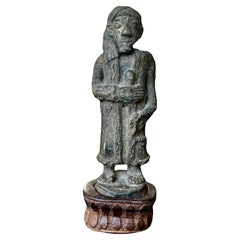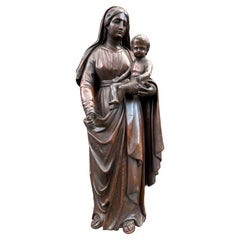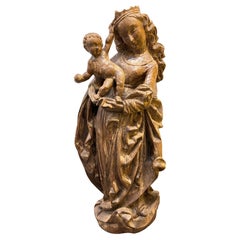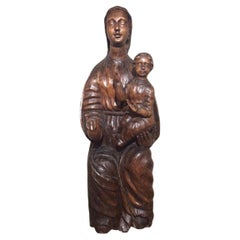Items Similar to Early 20th Century Carved Wood Mary and Child in Medieval Style
Want more images or videos?
Request additional images or videos from the seller
1 of 9
Early 20th Century Carved Wood Mary and Child in Medieval Style
$1,250
£942.82
€1,088.97
CA$1,751.34
A$1,947.39
CHF 1,019.49
MX$23,787.68
NOK 12,810.91
SEK 12,051.23
DKK 8,129.09
About the Item
Early 20th Century wood Mary and Child in Medieval Style, likely carved in the Philippines.
17.75" x 4" x 4"
- Dimensions:Height: 17.75 in (45.09 cm)Width: 4 in (10.16 cm)Depth: 4 in (10.16 cm)
- Materials and Techniques:
- Place of Origin:
- Period:
- Date of Manufacture:Early 20th century
- Condition:The condition is consistent with age. Please view all photos.
- Seller Location:San Francisco, CA
- Reference Number:1stDibs: LU5199239504962
About the Seller
5.0
Platinum Seller
Premium sellers with a 4.7+ rating and 24-hour response times
Established in 1985
1stDibs seller since 2020
388 sales on 1stDibs
Typical response time: 3 hours
- ShippingRetrieving quote...Shipping from: San Francisco, CA
- Return Policy
Authenticity Guarantee
In the unlikely event there’s an issue with an item’s authenticity, contact us within 1 year for a full refund. DetailsMoney-Back Guarantee
If your item is not as described, is damaged in transit, or does not arrive, contact us within 7 days for a full refund. Details24-Hour Cancellation
You have a 24-hour grace period in which to reconsider your purchase, with no questions asked.Vetted Professional Sellers
Our world-class sellers must adhere to strict standards for service and quality, maintaining the integrity of our listings.Price-Match Guarantee
If you find that a seller listed the same item for a lower price elsewhere, we’ll match it.Trusted Global Delivery
Our best-in-class carrier network provides specialized shipping options worldwide, including custom delivery.More From This Seller
View All19th Century Bronze Lady
Located in San Francisco, CA
Extremely beautifully detailed 19th century bronze. A lady leaning on a tree stump after picking flowers for her basket. Great original patina. Sculptur...
Category
Antique 19th Century European Figurative Sculptures
Materials
Bronze
Native American Mother and Child Painted Ceramic Sculpture
Located in San Francisco, CA
Native American mother and child painted ceramic sculpture by Manuel Felguerez.
Category
20th Century North American Native American Figurative Sculptures
Materials
Ceramic
Late 19th-Early 20th C. French Alabaster Statue
Located in San Francisco, CA
Stunning alabaster statue depicting a maiden selling flowers in the style of Ada Cipriani.
Late 19th-early 20th Century - France
No visible signature
16" W x 14" D x 49.5" H
Category
Antique Late 19th Century French Art Nouveau Figurative Sculptures
Materials
Alabaster
Early 20th Century Metal Figure of Man With Turban
Located in San Francisco, CA
Early 20th Century Metal Figure of Man With Turban
Wood base
Possibly Middle-eastern
7.5"H x 2"W x 1.5"D
Category
20th Century Figurative Sculptures
Materials
Metal
Architectural Element Hand Carved Walnut Figure Depicting Zeus
Located in San Francisco, CA
C. 20th century
Architectural Element Hand Carved Walnut Figure Depicting Zeus.
Category
20th Century Figurative Sculptures
Materials
Wood, Walnut
Pair of 19th Framed Century Carved Lime Wood Sculptures Depicting Romantic Scene
Located in San Francisco, CA
Pair of 19th Framed Century carved lime wood sculptures depicting romantic scenes
Swizerland
9.5"H x 8.25"W x 2.25"D framed
5.5" x 8.5"H unframed
Category
Antique 17th Century Decorative Boxes
Materials
Wood
You May Also Like
Antique Museum Quality Carved Oak Church Statue of Mother Mary & Child Jesus
Located in Lisse, NL
Beautiful, early 1800s, wooden sculpture of a Holy Mary with child Jesus on her arm.
This stunning church relic is another great example of the quality of 19th century, European craftsmanship and we are grateful for it to have found its way to our gallery. Also, because we are certain we will make a private collector or someone's congregation very happy with it. From the amazing body posture, the wonderfully serene facial expressions and the superb manner in which Her draped clothes are hand carved, one can see that this antique and sizeable Virgin Mary statue is the work of a master sculptor. This rare antique statue is made of solid oakwood and can be enjoyed on the floor, on a table, on a wall bracket or even mounted on your wall (via the sturdy antique metal hook...
Category
Antique Early 19th Century European Gothic Revival Religious Items
Materials
Wood, Oak
Antique Statue of Virgin Mary and Child , 19th Century
Located in Basildon, GB
A Pine Carving of Virgin and Child signed E. Lechner. Carved in 15th Century style, a high relief with a hollowed back and depicting the crowned Virgin standing on contrapose with lo...
Category
Antique Mid-19th Century European Gothic Religious Items
Materials
Wood, Pine
Madonna And Child – Southern Netherlands, Ca. 1470–1525
Located in Bilzen, BE
"Madonna And Child – Southern Netherlands, Ca. 1470–1525"
Carved oak, unpolychromed
Height: 24 cm
Brabantine workshop (likely Leuven or Brussels)
A finely carved devotional statue o...
Category
Antique 16th Century Gothic Religious Items
Materials
Wood
Large Madonna and Child Statue , France 16th century
Located in PARIS, FR
Large Virgin and Child Statue in Majesty, seated, holding Christ in her left hand.
Sixteenth century Mosan(?) work.
Oak wood, hollowed out at the back.
No traces of original gilt no...
Category
Antique 16th Century French Renaissance Figurative Sculptures
Materials
Oak
18th Century French Carved Statue of Madonna and Child
Located in Godshill, Isle of Wight
18th century French carved statue of Madonna and Child.
This charming piece has been rescued from a ecclesiastic clear out in the southern part of France
The statue is carved fro...
Category
Antique Mid-18th Century Mission Figurative Sculptures
Polychrome carved wood Virgin and Child from the 15th Century
Located in Saint-Ouen, FR
POLYCHROME CARVED WOOD VIRGIN AND CHILD FROM THE 15TH CENTURY
ORIGIN: SOUTH GERMANY, SWABIA, NUREMBERG REGION
PERIOD: 15th CENTURY
Height: 94,6cm
Width : 28 cm
Depth : 18 cm
Lime wood
Original Polychromy
Good state of conservation
From 1430 onwards, sculpture underwent a profound stylistic renewal which continued until 1530, the so-called late Gothic period. In the Germanic countries, original sculptures flourished in an expressive and sensitive vein.
This renewal was inspired by the art of Nicholas of Leiden, who was active in Strasbourg in the 1460's. His style broke with the refined and delicate art of the international Gothic style in force throughout Europe around 1400. The figures became more authentic and realistic. The bodies became denser. Clothes are animated by deep, broken folds, the fabrics are heavy and have a great decorative value. In addition, the polychromy is intended to be illusionistic. The painting makes it possible to restore the texture of the materials, the richness of the textiles and the natural skin tone of the characters.
The dissemination of images through engraving and the great mobility of the artists led to the success of this style, which conquered the Upper Rhine, Swabian, Tyrolean and Franconian regions, contributing to the formation of a common stylistic identity in these regions. The economic boom in the flourishing German cities was conducive to the development of original production. Attracted by this prosperity, numerous workshops were set up in order to meet the orders of religious communities, the Church and the laity, including a clientele of middle-class rockers.
This precious Virgin and Child is depicted standing on a crescent moon, her head encircled by a crown of tall flowers. Her long wavy hair spreads over her shoulders, framing her beautiful oval face. Under fine eyebrows drawn with a brushstroke, her almond-shaped, slightly drooping eyes look at the Child with infinite softness. She is dressed in a long red dress with a rounded neckline, belted under the chest. The heavy fabric of her dress spreads out in broken folds at her feet. On her shoulders she wears a golden cloak. The drapery has deep folds. She holds out her right hand while she holds the Christ Child with her left.
Christ, with his well-defined hair, is naked. His cheeks are highlighted with red, he holds an apple in his left hand and with the other hand makes a sign of blessing towards the faithful.
Virgins with Child on a crescent moon were very popular in the second half of the 15th century, especially as the central subject of altarpieces in southern Germany and Austria. The crescent moon on which Mary is standing is reminiscent of the Woman of the Apocalypse. Often equated with the Virgin Mary.
This episode is taken from the Book of Revelation (12:1-6)
1 Then a great sign appeared in heaven: a woman clothed with the sun, with the moon under her feet and a crown of twelve stars on her head. ; 2 She was pregnant, and she cried out because she was in labor, in pain from giving birth. ; 3 Then another sign appeared in heaven: it was a great fiery red dragon, with seven heads and ten horns, and seven royal crowns on his heads. ; 4 His tail swept down a third of heaven's stars and threw them to the earth. The dragon stood in front of the woman who was about to give birth so that when she gave birth, he might devour her child. ; 5 She gave birth to a son, a male child who is to rule all the nations with an iron rod. Her child was snatched up to God and his throne. ; 6 Then the woman fled into the desert, where God has prepared a place for her. There she will be taken care of for one thousand two hundred sixty days.
Some theologians see in this woman a reference to the Virgin Mary and in the child, Jesus.
This remarkable work is a very fine example of sculpture from Swabian workshops in the last decades of the 15th century. It presents all the characteristic stylistic elements: a highly girdled silhouette, an abundant drapery with angular folds, but also a great physical presence accentuated by the polychromy that restores the anatomical details. This group is made of a wooden log. The deep folds of the drapery highlight the movement of the Virgin holding the child.
Bibliography :
Sophie Guillot de Suduiraut, Dévotion et Séduction, Sculptures souabes des musées de France, vers 1460-1530, Paris musée du Louvre-Éditions somogy, 2015
“Revelation 12 - Common English Bible...
Category
Antique 15th Century and Earlier German Gothic Figurative Sculptures
Materials
Wood
More Ways To Browse
Filipino Wood
Medieval Carved Wood
Philippines Antique
Philippines Carved Wood
Antique Wood Furniture Philippines
Art Deco Hood Ornament
Franz Jewelry
Rare Seashells
Renaissance Dragon
Roman Horse Sculpture
Antique Mandolin
Hair Wreath
Maling Pottery
Sculpture Of Athena
Vintage Mermaid Sign
Art Deco Alabaster Sculptures
Bronze Snake Sculpture
Fertility Figures
